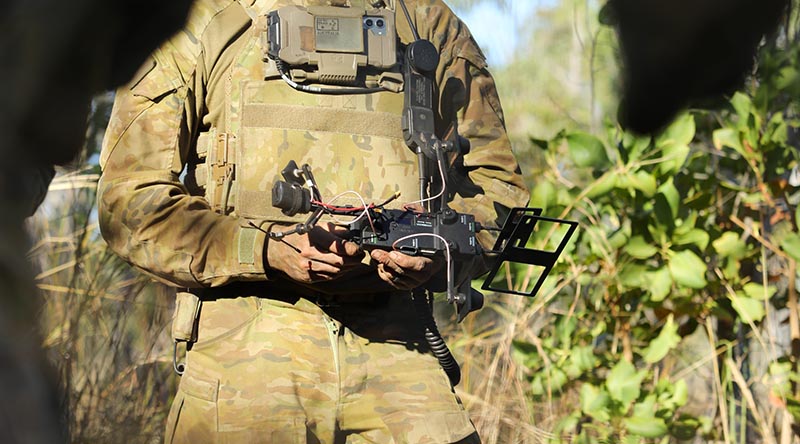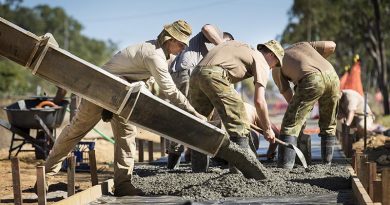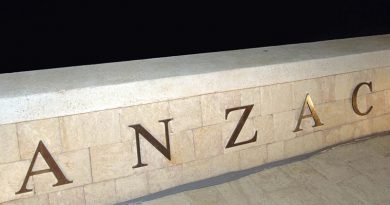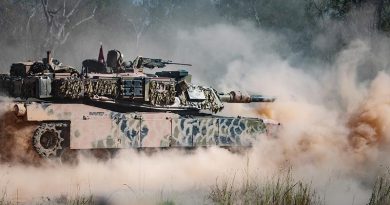Experimentation and the Australian Army: What’s Going on?
Share the post "Experimentation and the Australian Army: What’s Going on?"

“From commanding armoured vehicles in land combat to operating emerging technology, robotics and autonomous systems, soldiers from the 1st Armoured Regiment (1 Armd Regt) – Army’s full-time experimentation unit – completed their first major activity last month.”
The above quote is from a Defence PR release dated 24 Oct 2024. It raises an interesting question: why is it that 1 Armd Regt is referred to as “Army’s full-time experimentation unit”?
For those of us not fully abreast of the extent of Army’s experimentation credentials, the 5th Engineer Regiment (5ER) is an ARES unit within 5 Brigade, whose role is to “experiment with new equipment in challenging conditions”. (Earlier this year, 5ER trialled a composite mat system to provide hard-standing for wet-weather operations at RAAF Base Tindal.)
These weren’t the first Army units to be selected for an experimentation role: “In 2021-2022, 1RAR served as an experimental unit to develop a ‘disrupt force’, a light infantry group with uncrewed aerial systems that would act ahead of other forces to conduct reconnaissance and ambushes”.
Interestingly, the Defence Strategic Review’s decision to make 1 Armd Regt a Combat Experimentation Group (CXG) was announced in Sep 2023; one has to wonder about the feedback provided by 1RAR’s time as an experimental unit the previous year. Just how was the decision made to select 1 Armd Regt to be stripped of its tanks and made a non-combatant … leaving 3 Brigade (Armoured) deficient a tank squadron, a cavalry squadron and a battlegroup headquarters (quite apart from the sacrifice of 75 years history and tradition)?
The Chief of the Defence Force has stated that there was “a clear need for a unit organised and structured to accelerate transformation through experimentation and the development of new tactics”. So be it … but why was it that 1 Armd Regt was the one to become a non-combatant, rather than, say, 2 Cav Regt.
The CDF explained that 1 Armd Regt was selected for the ‘vital role’ because of the unit’s “reputation as some of the Army’s foremost experts in manoeuvre warfare (sic)”. This is a surprising justification, given that being expert in manoeuvre warfare has absolutely nothing at all to do with the ability to evaluate emerging technologies. (One would even imagine that very different selection criteria would apply.)
If further work is to be done re the light infantry ‘disrupt force’ concept, will this fall to the CXG, i.e. to what extent does 1 Armd Regt assume responsibility across all Corps (or is this a role of the Battle Lab)? This raises the question as to exactly how well Army’s experimentation role has been thought through.
My previous ‘Letter to the Editor’ referred to the recent (and surprising) discovery of the existence of Forces Command’s Battle Laboratory; the role of which is to: “analyse, assess and experiment across the entire spectrum of military tactics, techniques, equipment and of course, training”. The following information has been requested …
Commanding Officer,
Battle Laboratory
Headquarters, Forces Command
Dear Sir,
I’m one of a number of 1st Armoured Regiment veterans who were dismayed when they learnt that their former unit was being stripped of its tanks, in order to create a Combat Experimentation Group (CXG). Seventy-five years of history and tradition gone in an instant.
We were coming to terms with the Chief of Defence Force’s advice that: “There is a clear need for a unit organised and structured to accelerate transformation through experimentation and the development of new tactics”, when we learnt about the Battle Laboratory (which you had been appointed to command in June 2023). We had previously thought that the CXG was a ‘one off’ and now find ourselves puzzled indeed.
Can you please explain if the Battle Lab and CXG have any relationship (command or otherwise). There seems to be an overlapping of tasking … both units for example, working with Unmanned Aerial Vehicles (UAVs) during Exercise Talisman Sabre 2025. If the units are independent of one another, is there any means of sharing information between them?
Google explains the difference between a Battle Lab and a CXG in this way:
The key difference lies in their function: Battle Labs serve as hubs for innovation, while Combat Experimentation Groups are the entities that perform the actual experimentation and trials. Would you agree with this?
Many thanks for your help in understanding the transformation occurring within Army at present.
Yours sincerely,
Bruce Cameron
5 October 2025
.
Lieutenant Colonel Bruce Cameron, MC, RAAC (Ret’d)
.
.
FILE PHOTO: An Australian Army soldier from 1st Armoured Regiment briefs Chief of Army on some of his units new experimental fighting equipment in Shoalwater Bay training area in Queensland during Exercise Talisman Sabre 2025. Photo by Captain Joanne Leca.
.
.

.
.
Share the post "Experimentation and the Australian Army: What’s Going on?"





